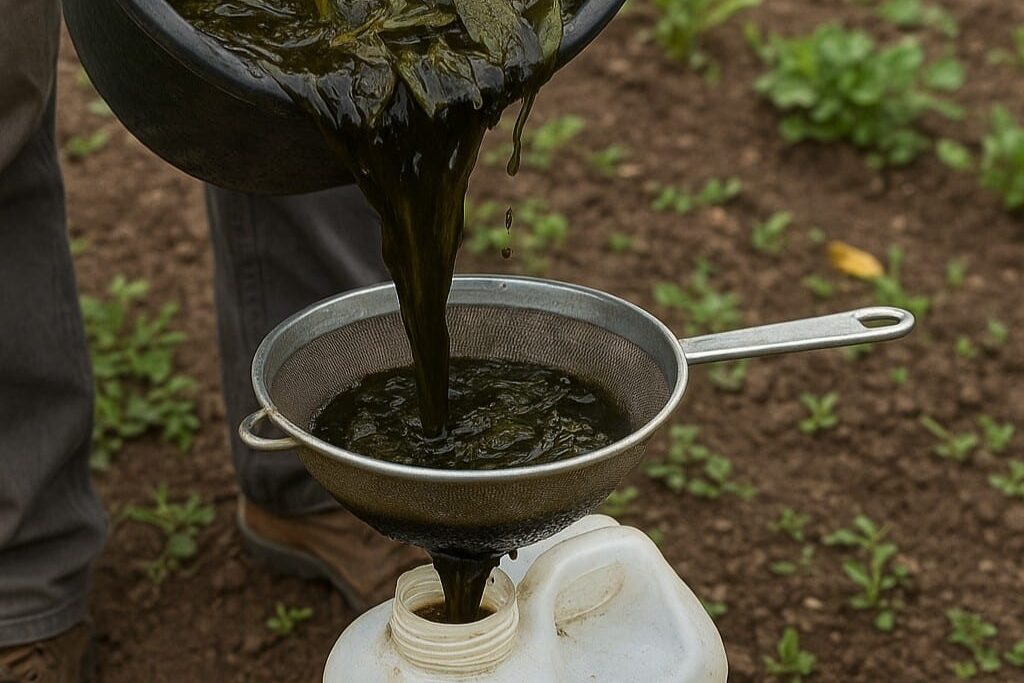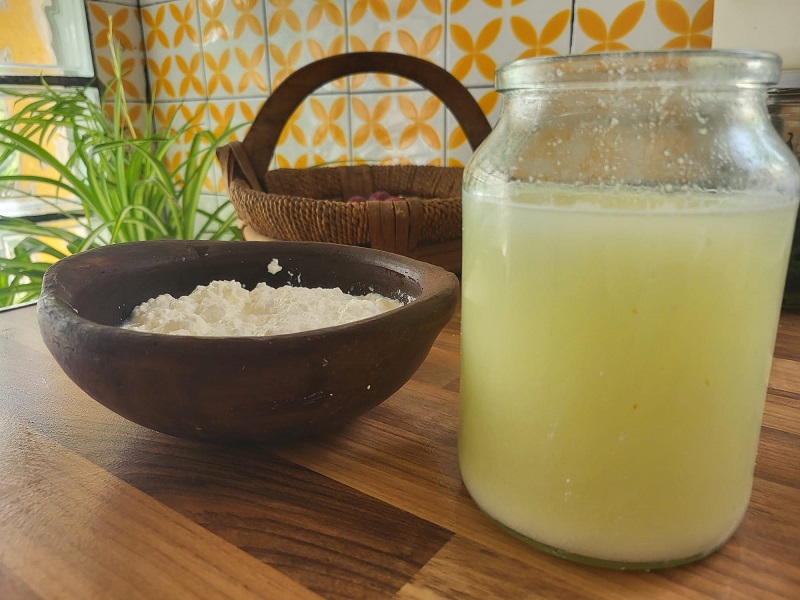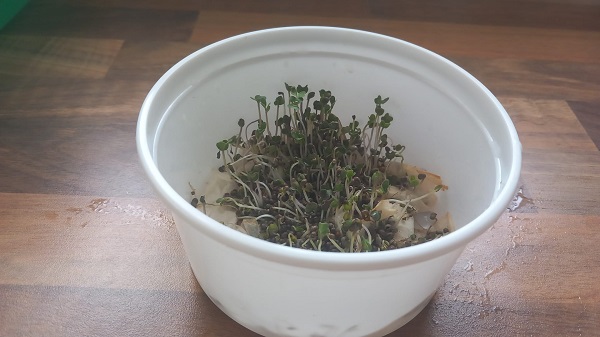Did you know that some of the most common plants we have in our orchards and gardens can be powerful allies for the care of them? There is a simple, natural and very effective way to take advantage of their properties, creating a homemade preparation known as slurry, which nourishes, strengthens and protects our crops.
This method, used in organic farming, transforms fresh ingredients into a liquid full of life. We do not need great resources, just a little patience… and some intense aroma.
In this post we tell you everything you need to know to prepare your own slurry at home, use it safely and get the most out of it in your garden or orchard.
What is Purin?
Plant slurry is a liquid preparation obtained from the fermentation of plant matter in water. It is a natural remedy with multiple benefits for the organic garden, as it provides nutrients, improves soil vitality and acts as a repellent against some pests.
Its preparation is simple and uses wild herbs such as nettle, comfrey or dandelion. When fermenting, these plants release beneficial compounds (nitrogen, potassium, calcium or silica) that can then be applied directly to the soil or sprayed on the leaves.
Uses of Slurry
Slurry is as versatile as it is powerful. Its application depends on the base plant we use and the moment of the crop in which you are. Here we tell you the most common uses so you can take full advantage of it:
- Liquid fertilizer: Applied diluted in the irrigation, the slurry provides nutrients directly to the soil, favoring a more vigorous growth, since they are especially rich in nitrogen, phosphorus and potassium.
- Growth stimulator: At key stages such as transplanting or the beginning of flowering, a well-balanced watering with slurry can give an extra boost to our plants.
- Natural strengthener: When sprayed on the leaves, the slurry strengthens the defenses of our plants, helping them to better resist diseases and adverse conditions.
- Pest repellent: Some slurries, such as fern slurry or nettle slurry, can repel aphids, spider mites and mealybugs. Although they are not aggressive insecticides, they do create a less attractive environment for many harmful insects.
- Compost conditioner: If you add slurry to your composter, you speed up decomposition and increase the nutrient content of the final compost.
How to Prepare
Making slurry at home is a simple and very accessible process, which only requires a little patience and some basic materials. The key is in the fermentation of the selected plants. When we let them macerate in water for several days, they release their compounds, resulting in a liquid concentrate full of nutrients and beneficial microorganisms for our garden.
Here we tell you what you need and how to do it step by step:
Materials Needed
- A large plastic or earthenware container (never metal)
- Non-chlorinated water. We can use rain water or water that has been rested for 24 hours.
- Freshly chopped plants (nettle, horsetail, horsetail, etc.)
- A stone or grid to help keep the plants submerged.
- A fabric or cover that allows breathing (mosquito net, jute sack…)
- A rod for stirring.
- Bottles or carafes to store the filtered slurry.
Step by Step
1º Cut the plants: Cut the leaves and stems into small pieces to facilitate fermentation.
2º Place the plants in the container: Approximately 1 kg of plant per 10 liters of water.
3º Add the water: Cover the plants completely with water. If you use tap water, let it stand for 24 hours beforehand so that the chlorine evaporates.
4º Keep the plants submerged: Use a stone, grid or any clean object to keep the plants under the water level.
5º Cover the container: Cover it with a cloth that allows air to pass through but prevents insects from entering.
6º Stir every day: Mix once a day to oxygenate and help the fermentation process.
7º Wait and see: After 10 – 15 days, depending on the temperature, the slurry will be ready. You will know it by its strong smell and dark color.
8º Filter and store: Strain the liquid and store it in opaque bottles in a cool, dark place.




Conservation
Once filtered, plant slurry can be kept for several weeks or even months if stored under the right conditions. Although its effectiveness is greater when it is fresh, with some basic care you can extend its useful life and continue to take advantage of its benefits in the garden.
To keep it in good condition:
- Keep it in opaque or dark glass containers: This will protect it from light, thus avoiding the degradation of its compounds.
- Close tightly but with occasional ventilation: Although it is important that the container is tightly closed to prevent air from entering, it is advisable to open it briefly from time to time to release any accumulated gases.
- Store in a cool and shaded place: Store the slurry in a place with stable temperature, away from direct sunlight and heat sources.
- Shake before use: Before applying the slurry, shake the container well to homogenize the components.
Avoid storing large quantities if you are not going to use them soon, and, if you notice that the smell changes drastically or strange fungi appear, it is better to discard the contents and prepare a new batch. This way, you can have a natural and potent liquid fertilizer on hand when your plants need it most.
How to Apply Slurry
Applying slurry in your orchard or garden is simple, but it should be done properly to make the most of its properties without damaging your plants. Depending on the plant used and the time of cultivation, the use may vary slightly, but there are some general guidelines you can follow:
Diluted as fertilizer
The most common form of application is to dilute the slurry in water before watering. The standard ratio is 1 part slurry to 10 parts water (10%). This mixture is used directly in the substrate, close to the roots, and provides essential nutrients and improves soil microbial activity.
Preventive spraying
In cases where we use nettle slurry, we can apply it sprayed on the leaves, diluted to 5% (1 part of slurry per 20 parts of water), to strengthen the plant against pests and diseases. However, avoid doing it in hours of intense sunlight so as not to burn the leaves.
Reinforcement at key moments
Apply slurry after transplanting at 10%, during active growth or if you detect slight nutritional deficiencies. This helps to stimulate development and improve plant resistance.
Important precautions
- Never apply undiluted slurry, as its concentration can damage the roots and leaves of our plants.
- Avoid excess, more is not better. Moderate use every two weeks is sufficient in most cases.
- Pay attention to the plant’s cycle, in flowering or fruiting stages, do not abuse nitrogen-rich manures (such as nettle manure), as they can cause the plant to grow a lot in leaves and stems, but produce fewer flowers or fruits.
- If you are using it for the first time, each species and environment may react differently, so try a few plants first.
Here is a selection of products that can make your work easier if you dare to prepare your own slurry:
🪣 10L bucket
A basic for preparing slurry, substrate mixtures or composting organic waste.
👉 View on Amazon🗑 Strainer/Filter Cloth
Filters extracts and natural preparations in a simple and efficient way. Ideal for orchards and organic processing.
👉 View on Amazon👜 Jute Sack
A basic for use in garden and vegetable garden projects. Natural, resistant and versatile.
👉 View on Amazon

